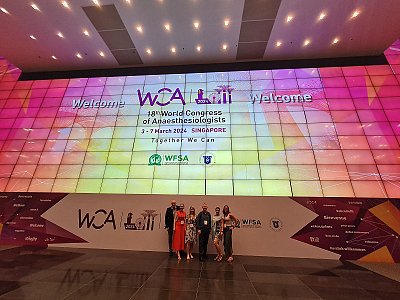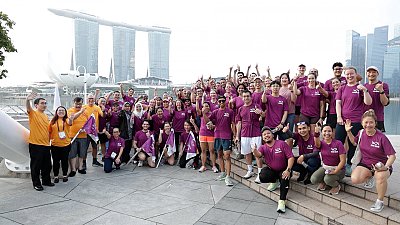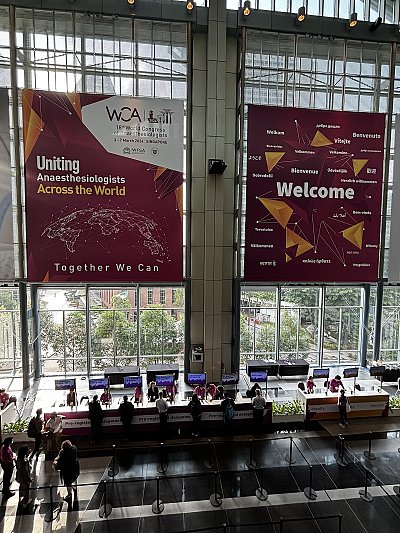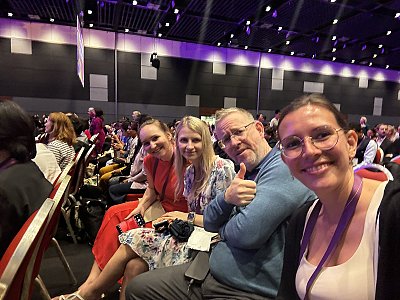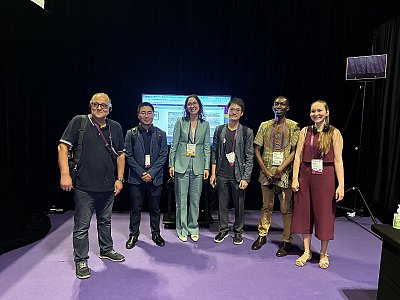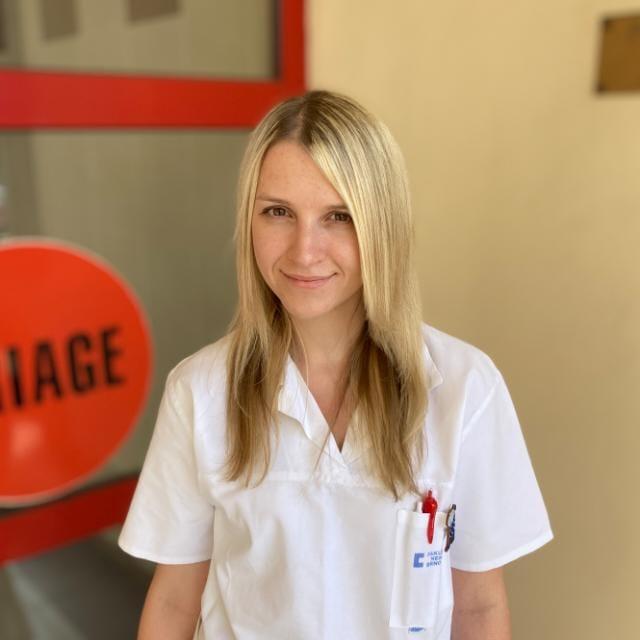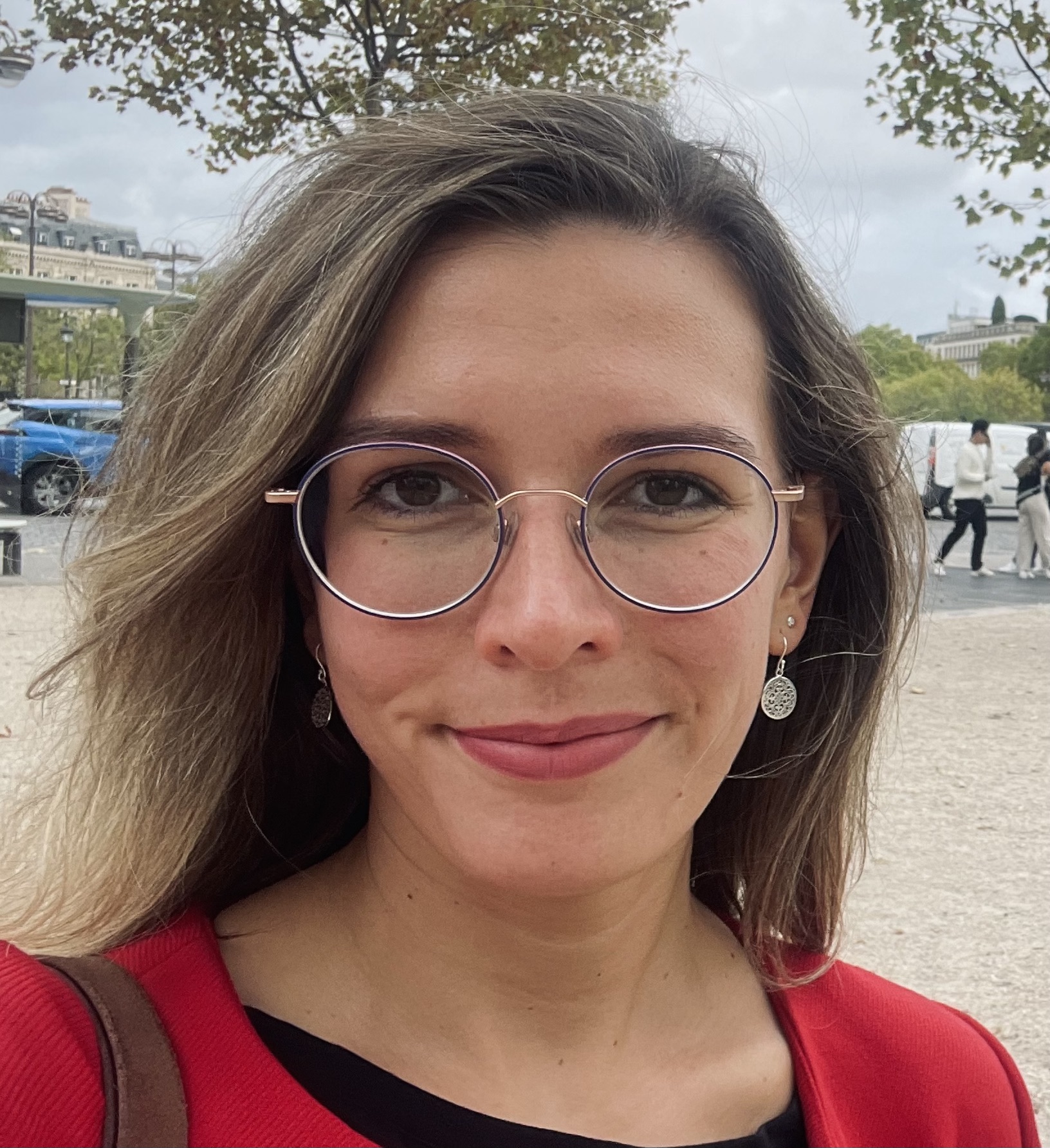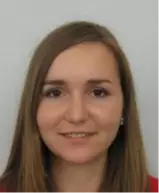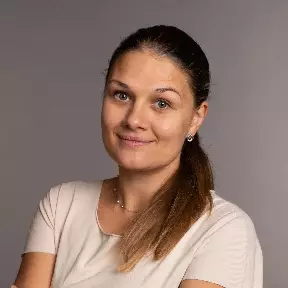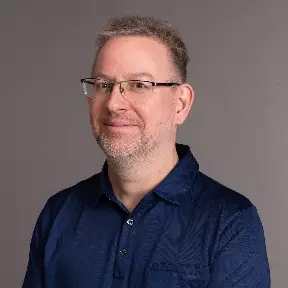The World Congress of Anesthesiologists attended 4,862 participants from 142 countries worldwide, with nearly 1,500 more joining via the online platform. The congress offered a wide range of topics presented through lectures, panel discussions, and poster sessions. Each participant could choose from an extensive selection of workshops, engaging in discussions reflecting the latest trends.
At the opening ceremony, the Minister of Health of Singapore addressed the participants, welcoming them and mentioning the aging global population, which necessitates investments in medical technologies, including artificial intelligence, crucial for healthcare provision. Several WFSA awards were presented during the ceremony. The Distinguished Service Awards were given to Gertrude Marun, Hazel Mumphansa, and Jannicke Mellin-Olsen. The Rising Star Award was received by Eugene Tuyishime. The Fresenius Kabi WFSA Innovation Awards for innovations in the field were granted to Karen Nanji, Alan Tung, and Pei Kee Poh. Subsequently, we enjoyed a performance by a local dance troupe showcasing a traditional lion dance.
Petr Štourač
The World Congress in Singapore was the first in-person congress in eight years. Unfortunately, due to the COVID-19 pandemic, Prague lost its in-person congress in 2020, but a successful congress with a significant Czech presence was held in 2021. Singapore, a city-state with the second-highest population density per square kilometer, became the center of anesthesiologists from around the world for the first time. The congress traditionally began with the general assembly of delegates from 150 countries affiliated with the WFSA, led by Prof. Wayne Morris from New Zealand. During the four-hour session, attended by Prof. Štourač from the Czech Republic, a report on the WFSA's activities over the past years was presented. They had to, because the statutes and Dutch law, under which the WFSA falls, required it, adopt many points, some of which sounded almost humorous, as they confirmed facts already implemented, such as approving the term of the ongoing general assembly. If it hadn't been accepted, it's questionable how further proceedings would have been handled... However, this did not happen, and so the meeting could continue with the election part. It was an honor for me to support the election of Prof. Daniela Filipescu from Romania as the WFSA president, who is also known for her good and long-standing cooperation with ČSARIM. An important announcement from the meeting was the shortening of the congress's periodicity from 4 years to 2. Therefore, we will meet again in 2 years in Marrakech, Morocco, and in 4 years, in 2028, in Vancouver, Canada. Rotation was also established, meaning that candidates for 2030 from Southeast and Central Asia will be selected after these destinations, and in 2032, Europe will again have its turn. The Czech presence at the congress was evident. Five posters were presented by Brno authors: Dr. Klincová (2 presentations on malignant hyperthermia), Dr. Bonischová (presentation on depth of anesthesia monitoring), Dr. Skříšovská (simulation study on 5 initial breaths in pediatric CPR), and Dr. Klabusayová (case report on severe pediatric fulminant sepsis). All presentations had a clearly above-average level of expertise and presentation. In the Pain Committee, our country is represented by Prim. Viktor Kubricht from Prague's Homolka Hospital, who is more than visible in the field of EPM courses and acute pain management both in the Czech Republic and internationally. The new generation i-Gel laryngeal masks were presented by Prof. Pavel Michálek from Prague's VFN.
Tamara Skříšovská
It was a wonderful experience to participate in the 18th World Congress of Anaesthetists in Singapore. I would like to express my gratitude for the support during the presentation of data on ventilation during simulated pediatric cardiopulmonary resuscitation, and I would like to congratulate my colleagues Eva Klabusyová, Martina Klincová, and Tereza Bönishová for their excellent presentations in the poster section. The new president of the World Federation of Societies of Anaesthesiologists was elected here, Professor Daniela Filipescu from Romania. Among all the experiences from the WCA, I would like to mention the lecture by Harold Griffin and the Patient Blood Management track.
Harold Griffin's lecture on the second day of the congress was delivered by two outstanding speakers, Dr. Jannicke Mellin-Olsen from Norway and Professor Kevin Fong from the UK. Jannicke shared her personal experiences from intensive care from the patient's perspective. Within her presentation, she mentioned the concept of the Four Good Habits Model for improving communication between doctors and patients. According to this model, it is essential to invest time and attention at the beginning of the conversation to emphasize the role of both parties (doctor and patient) in the treatment process. It is also essential to understand the patient's perspective and their most significant concerns. According to this concept, the third good habit is to focus on emotions and show empathy. The fourth step is to invest time at the end of the conversation - to offer the patient references and professional resources for comparing interventions and options, if desired, and to offer support in the decision-making and treatment process.
Professor Fong focused his presentation on medical errors and complex systems. Healthcare is often compared to aviation in terms of safety. Professor Fong mentioned that although aviation has achieved a high level of safety and reduced the occurrence of errors, medical errors need to be viewed through a different lens. Medicine is more complex than other fields, considering the complexity of how easy or difficult it is to create a computer-based simulation of the environment or how many mathematical equations are needed to describe the system. Considering how complex the physiology and pathophysiology of the human body are and how dynamically they change, especially in critically ill patients, the occurrence of medical errors in this environment is understandable. It is necessary to focus on improving systemic measures to improve patient safety.
I endeavoured to learn as much as possible about the innovations in Patient Blood Management (PBM) at this congress. The PBM track resonated primarily with the new definition of the entire concept, which primarily targets the patient and improves safety, rather than laboratory values or the number of transfusion products administered. The theme of blood as another organ, which we as doctors should care for with the same attention as other organs - the concept of so-called blood health, was also reiterated. In the pediatric part of PBM, Dr. Susan Goobie from Boston presented PBM as a Global Perspective Standard of Care. PBM in pediatric patients basically does not differ from the principles applied in the adult population - concerning the perioperative period; it is necessary to search for the causes of anemia, use a restrictive approach in deciding on the administration of blood products, use antifibrinolytics where indicated, include transfusion protocols for target therapy, and above all, focus on the patient and not just on the treatment of laboratory values. However, data from well-designed studies are still lacking within the pediatric population. A training program for teaching PBM was also introduced during the congress, which should facilitate the dissemination of PBM principles among healthcare professionals and hospital management.
Tereza Bönischová
The opportunity to attend the World Congress of Anesthesiologists in Singapore and present my work on the international scientific stage was not only a great challenge but also an unparalleled opportunity and experience. The professional program was very packed with interesting lectures not only in patient care but also in the field of science and research.
In the block dedicated to sedation in children in various situations, four speakers presented their insights. Dr. Kaira Mason from Boston mentioned complications arising from inadequate, especially deep, sedation. She focused on sedation with propofol and dexmedetomidine and their potentiating effects. She spoke about sedating obese children and differences in pharmacokinetics compared to non-obese ones. Dr. Vivian Yuen from Hong Kong discussed alternatives to intravenous sedation and their advantages, particularly nasal sedation, which is simple to administer. She highlighted differences in pharmacokinetics and pharmacodynamics compared to IV sedation. Nasal sedation is very popular in their clinic, especially for children under 7 years old. During application, she recommends head tilting and the use of an atomizer instead of drops, which is better tolerated by children. She also emphasized the possibilities of combining dexmedetomidine and ketamine for nasal administration. Dr. Pablo Sepulveda from Chile talked about sedation using TCI, its advantages, and disadvantages. He recommended monitoring the EEG of sedated patients as deep sedation often occurs more than needed. A published study showed burst suppression on EEG in 56% of sedated patients. The last speaker was Dr. Mohamed Mahmoud from Cincinnati, who discussed the issue of obstructive sleep apnea syndrome (OSA) in children. He showed an interesting video demonstrating airway collapse in these patients during sedation or sleep. He mentioned the issue of OSA diagnosis, as many pediatric patients are not properly or at all diagnosed. An interesting block was dedicated to the preparation of clinical studies. First, it is necessary to identify a clinical problem, conduct literature research, formulate a hypothesis, and clarify whether it is ethical and technically feasible to conduct the research. The types of clinical studies and their specificities were mentioned. I would also like to mention the lectures focusing on neuromonitoring in anesthesia. First, the Conox device and its possibilities in monitoring the depth of anesthesia and analgesia were introduced. The suitability of measuring the depth of anesthesia with respect to perioperative outcomes was repeatedly emphasized. An interesting study compared the one-year mortality of patients, where some were anesthetized at BIS 50 and others at BIS 35. It was found that there was no difference in mortality. The issue of postoperative delirium and postoperative cognitive dysfunction (POCD) in relation to the depth of anesthesia in seniors was reiterated. According to the latest studies, postoperative delirium occurs in up to 65% of patients over 65 years of age, and 10% of them experience POCD. The incidence of postoperative delirium in children varies widely and is reported between 10-80%.
A very interesting and my favorite part of congresses is the poster section, which brings a plethora of interesting studies and case reports from around the world. At this year's WCA 2024, an impressive 1231 presentations were presented.
Eva Klabusayová
This year's WCA was absolutely packed with interesting topics. On the very first day of the congress, what interested me the most was the session focused on pediatric anesthesia with the subtitle "My worst nightmare in the operating room." The first speaker was Prof. Nicola Disma from Italy, whose topic was airway management. Through the case report of a pediatric patient with Melnick-Needles syndrome, he demonstrated the management of anticipated difficult airway management. He emphasized the importance of following algorithms for difficult airway management, calling for help promptly, having a backup plan B and even C prepared, limiting the number of intubation attempts to 3+1, and last but not least, considering the possibility of combining techniques for airway management. In the case of this specific patient, a combination of hyperangulated blade videolaryngoscopy with fiberoptic intubation during total intravenous anesthesia was used for successful airway management. He also pointed out that while some conditions may improve with age in terms of anatomical conditions for airway management (such as Pierre Robin syndrome, Goldenhar syndrome), others may worsen with age (for example, Treacher Collins syndrome, Apert syndrome).
The second nightmare, dealing with unexpected perioperative bleeding during routine laparoscopic surgery, was the topic discussed by Dr. Sundaram from India. Massive bleeding is defined as blood loss of 40 ml/kg or the need to replace 50% of the total body volume every hour. In the event of bleeding, the anesthesiologist must immediately address several issues simultaneously – ensuring adequate venous access, closely monitoring the patient, and, most importantly, promptly administer blood and blood products while efforts are made to surgically address the source of bleeding. It is crucial to call for assistance immediately and, while awaiting the availability of blood and blood products, to compensate for volume loss with boluses of balanced crystalloid solutions at 20 ml/kg and administer 20-30 ml/kg of erythrocytes as soon as possible. In cases of ongoing bleeding, further compensation should be made in a ratio of 1:1:1 for erythrocytes:fresh frozen plasma:platelets (20:10:5 ml/kg). Additionally, the administration of tranexamic acid at 10-30 ml/kg should not be overlooked, and measures to prevent hypothermia, hypocalcemia, and hyperkalemia should be taken. In the end she mentioned the necessity of local massive transfusion protocols.
In addition to anesthesia, a variety of topics from intensive care were also presented at the congress. Under the guidance of Dr. Brady from Houston, I participated in a PBLD session on the initiation of ECPR in children. Using a real case of a 6-year-old boy who underwent bowel surgery and developed severe hypotension and sinus bradycardia, leading to the initiation of extracorporeal cardiopulmonary resuscitation (ECPR) in the PICU, we went through all the initial steps of ECPR. We discussed the criteria for initiating ECPR and then delved into detailed management, covering topics such as cannulation (sites of insertion and types of ECMO cannulas), technical aspects of cannulation during ongoing resuscitation, anticoagulation, and troubleshooting common issues.
In addition to educational activities, the congress also offered several extracurricular activities, including the Fun Run, in which took part about 50 congress participants from around the world. Despite feeling quite tired, we set out in the early morning hours to Marina Bay, where the race started. Our reward was a beautiful sport experience as we ran around Marina Bay together during sunrise, enjoying incredible views and a friendly atmosphere. Although running in the high humidity of Singapore is a bit more challenging than running in typical Czech conditions, it was an experience worth cherishing.
Martina Klincová
Thank you ver much for the opportunity to attend the World Congress. People from all cultures, religions, and backgrounds came together to share experiences, educate themselves, and simply do their work a little better. Meeting motivated individuals from around (and really almost all of) the world who value being part of the WCA was like a "recharge" for me, motivating me to continue educating myself in the field.
The congress program was very packed, and it was difficult to choose just one session at any given time. The aforementioned lecture by Harold Griffin filled me with genuine joy that I chose our field. Primarily, I attended lectures focused on pediatric anesthesia during the congress. Besides sessions on procedural sedation and "My worst nightmare in the operating room," the session on innovations in pediatric regional anesthesia (RA) particularly caught my attention. Professors Ban Tsui and Santhanam Suresh from the USA, as authors of the chapter on pediatric regional anesthesia in Miller's anesthesia textbook, are true experts. In a relatively short time, they provided an overview and comparison of RA options for abdominal procedures and surgeries for congenital hip dysplasia. A novelty for me was the use of the PENG block (pericapsular nerve group block), which they successfully use for hip, acetabulum, and femoral head surgeries, and in adults, for hip replacement. The caudal block resonated a lot with me, being relatively simple in children and further increasing its safety with the use of ultrasound. It even had a separate presentation, delivered by Dr. Vrushali Ponde from India.
At the congress, I presented two posters on malignant hyperthermia fror our team. I must admit that I initially didn't expect both posters to be accepted; after all, getting to a world congress "must be very difficult"... But in the end, I want to encourage young colleagues not to underestimate themselves. I believe we have something to say to the world, and it's not impossible.

